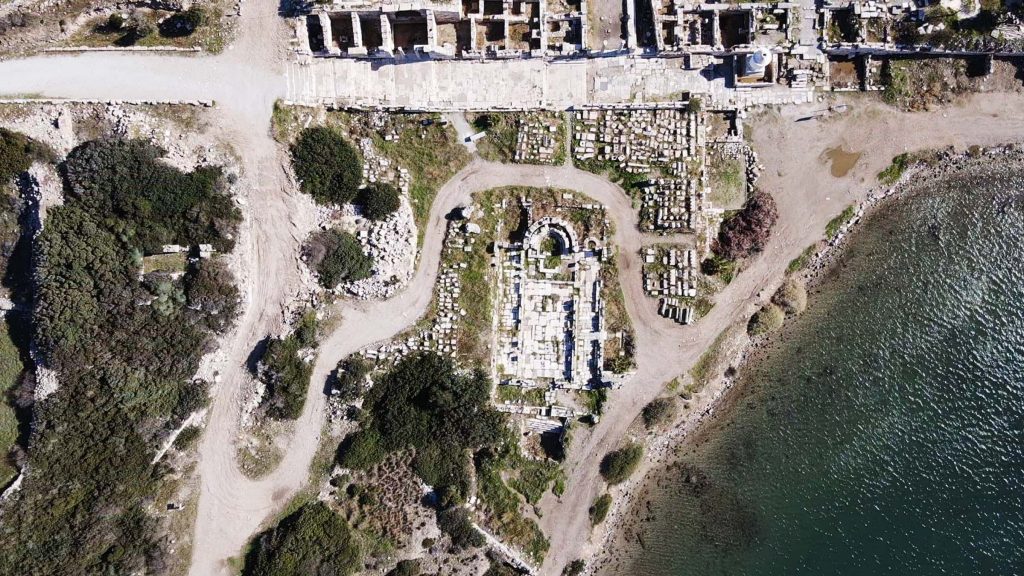The 2,600-year-old Great Church of Knidos Ancient City in the Datça district of Muğla is being restored, and its columns will soon be rebuilt. It will soon be opened to tourism.
Muğla, in the southwestern part of Türkiye along the Aegean coast, is known for its beautiful natural landscapes and rich historical sites. The city of Knidos, one of the most important centers of art and commerce in ancient times, continues to captivate visitors with its enduring magnificent structures. Welcoming thousands of local and international tourists every year, the city is renowned for its column-lined harbor avenue, agora, two ancient theaters, and twin harbors.
Knidos is said to have witnessed the lives of notable figures such as the astronomer and mathematician Eudoxus, the physician Euryphon, the painter Polygnotus, and Sostratus, the architect of the Lighthouse of Alexandria—one of the Seven Wonders of the Ancient World. The city occupies a special location where the Aegean and Mediterranean seas meet.
Eudoxus’ sundial, considered a groundbreaking invention of its time, still stands in its original place in the ancient city.
Accessible both by land and sea, the allure of Knidos is further enhanced by its unique setting. Expert teams carry out archaeological excavations year-round.
Professor Ertekin Doksanaltı, the head of the Knidos excavation team and a faculty member of Selçuk University’s Faculty of Literature, Department of Archaeology, told the Anadolu Agency (AA) that this year’s excavations are part of the Legacy for the Future Project.
Doksanaltı explained that the city’s main arteries and associated public and religious structures are being gradually unearthed. These efforts involve not only scientific publications but also conservation and restoration to ensure these areas are preserved for future generations.
He noted that alongside excavation and restoration work, Knidos continues to welcome visitors; Doksanaltı highlighted the intensive work being conducted in the city’s main church.
“In the church, we’ve uncovered significant data about the city’s social and religious structure between the fifth and seventh centuries A.D. Among these findings, the floor mosaics stand out in particular; the mosaics feature a wide array of figurative scenes, including depictions of wild and domestic animals, as well as botanical motifs that could be interpreted as representations of paradise,” he said.
“Prominent motifs include panthers, lions, and mountain goats. Based on our research, we can conclude that the mosaic artists here were highly skilled craftsmen who upheld the palace-style traditions of their era. The fallen columns and seating rows of the church are also being restored. As a result, a new destination has been added to the city for visitors to explore.”
Doksanaltı also reported the discovery of many new inscriptions in addition to previously unearthed Arabic inscriptions.
He noted that these findings provide significant insights, especially regarding Islamic conquests, and expressed hope for uncovering more inscriptions as the excavations continue.
The team is also working on the terraces that separate the city’s islands and parcels. Doksanaltı stated, “This work has not only revealed the city’s terrace walls but has also provided important data on ancient urban planning and how it has endured to the present day.”


